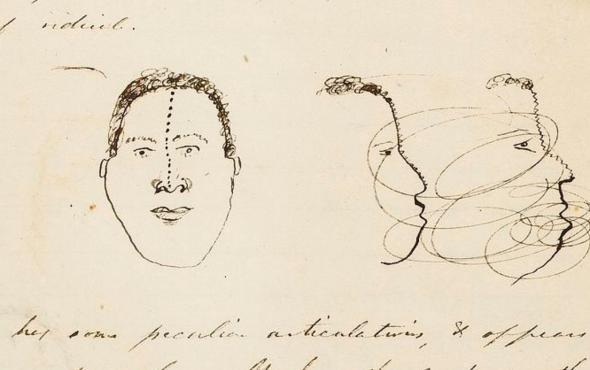The day after Thanksgiving in 1838, a group of American scientists and sailors docked in the port of Rio de Janeiro. They were the members of the United States Exploring Expedition, and thanks to the detailed notes of one of its members, Horatio Hale, historians can unravel one of Rio’s enduring historical mysteries: the diverse origins of its African slaves.
The United States Exploring Expedition’s primary purpose was to survey the Pacific Ocean and in particular the legendary coasts of Fiji. Approved by the War Department as a project of strategic importance, the expedition included naval officers and civilian scientists whose aim was to be America’s eyes and ears. Horatio Hale, the philologist of the crew, was charged with studying the peoples and languages that he encountered during the voyage. A Harvard undergraduate who had lived most of his life in Newport, New Hampshire, Hale was in for an adventure.
When the expedition had to stop for over six weeks to repair one of its vessels, Hale seized the chance to study the city’s Africans. He explored Rio’s pathways, markets, and alleys, documenting the many people he met. His notes are now part of the Smithsonian’s collections. In 98 pages that he “collected with care and detail,” Hale offers descriptions of languages, skin color, body types, and the markings of distinct groups of slaves from different corners of Africa. He filled page after page with vocabularies and drawings of branded flesh, teeth filed into different shapes, and ritual scars that signified the Africans’ ethnic and national identities.
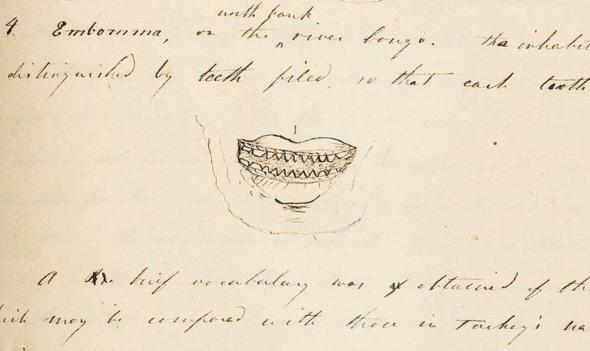
Manuscript 7235, National Anthropological Archives, Smithsonian Institution.
For Hale, Rio’s cacophony of sounds and kaleidoscope of marked flesh were a window into African culture. In Rio, slaves were “not solitary foreigners”; rather “they were always surrounded by a number of their own countrymen.” To this day, historians struggle to determine the origins of enslaved people in the New World. Hale used sounds and body markings to determine the origin of the Africans he met on the street, making his notes extremely valuable to present-day researchers.
Hale’s deductions and observations in 1838 reflected the most advanced scientific racism of his day. He offered descriptions of the slaves’ physiognomy, their intellectual abilities, their different roles in Brazilian society, and their place in the slave market. He divided Rio’s slaves into two geographical groups and concluded that slaves from the north of Africa, who he called “the Minias,” were intellectually superior to those of southern Africa. They were literate in Arabic, held places as servants or sellers in markets, and were suspected of inciting multiple slave rebellions in the region.
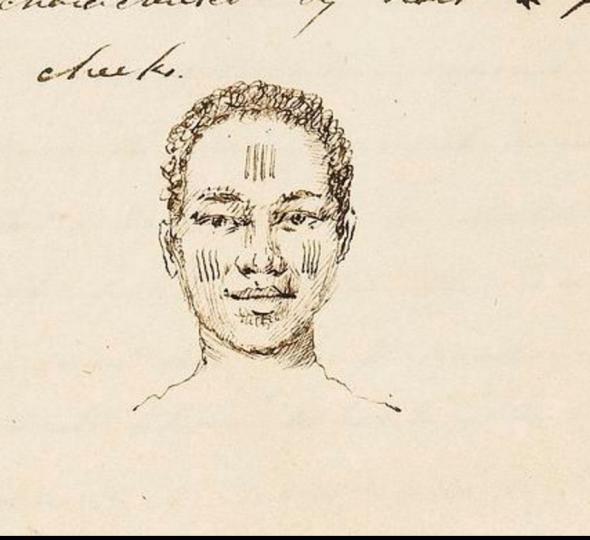
Manuscript 7235, National Anthropological Archives, Smithsonian Institution.
Hale’s meticulous observation of body markings allowed him to identify 11 different groups of Minias who had linguistic commonalities and shared facial tattoos shaped like parallel lines or mouth scarring. American slavery was never far from his mind, and American slaves were his point of reference. He saw the Minias as distinct from “the usual idea of the Negro.” They had “features whose contour approaches that of the European” with high cheekbones, straight noses, and thinner lips. They were “expressive of intelligence and dignity.”
On the other hand, the slaves from southern Africa differed little from American slaves, according to Hale. They were “indolent, thoughtless, licentious” and “well adapted to their situation as slaves.” He did not find them wanting in intelligence, as they “were acute and quick in apprehension.” Instead, he identified in them “a defective character [that] want[ed] energy, elevation, fairness, and self-reliance.” The only feature that their 12 groups shared with the Minias was their extensive use of body markings. However, the marks of the southern Africans were more elaborate. Hale described them as “figures [that] resembl[ed] somewhat the ornaments of Gothic architecture.”
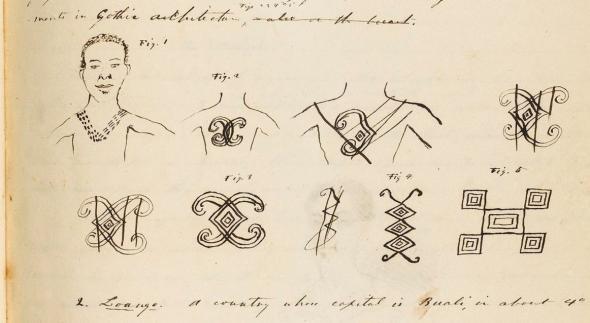
Manuscript 7235, National Anthropological Archives, Smithsonian Institution.
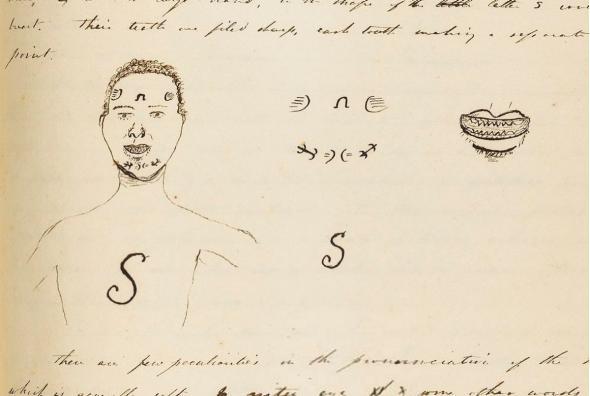
Manuscript 7235, National Anthropological Archives, Smithsonian Institution.
Because of their intricate tattoos, Hale’s ethnography of southern African slaves is more complex. He sketched facial scars shaped like horseshoes and chest markings similar to the letter S from a young Makua. He also saw parallel marks on the face of a 24 year-old Mundjula, who offered that they were a universal custom in his part of Africa. But other slaves were not so willing to explain the meaning or origins of their markings. For example, a group of Nyambana refused to explain to him how they created the row of artificial warts that formed a line from the center of their forehead to the tip of their nose. To Hale, their origin would remain a mystery.
After he returned to the United States, Hale published a book based on his research during the expedition, but little from his notes on Rio’s Africans made it in. However, their preservation by the Smithsonian offers historians, anthropologists, and linguists an excellent window into the ethnic diversity of enslaved Africans in Rio.
*Update, Aug. 16, 2016: The photo credits in this post have been updated to be more specific about where in the Smithsonian Institution the images are from.
